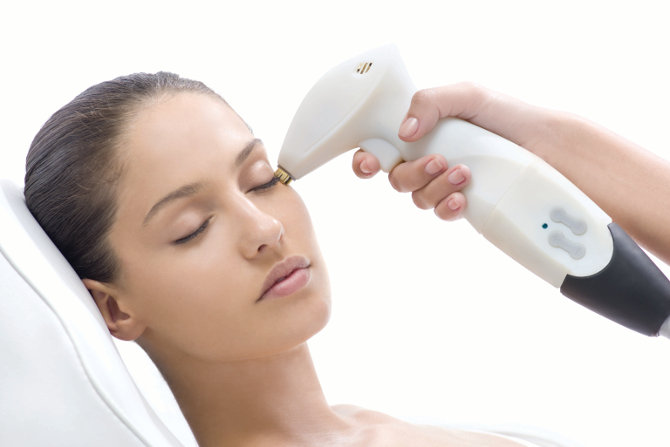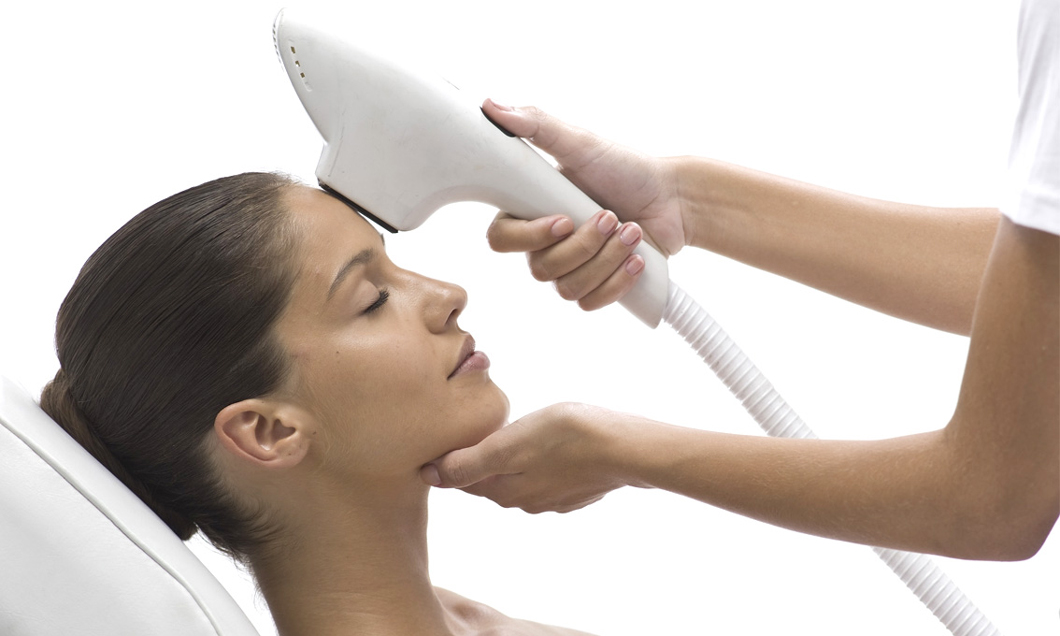
Photorejuvenation. [ Photo = Light; Rejuvenation = to make young again ] is the process of improving the skin color and texture through the use of light energy. Rejuvenation of the skin is not new and has been accomplished for many decades through chemical peeling, laser resurfacing and dermabrasion. These procedures, while extraordinarily effective, involve removal of the epidermis - the outermost layer of skin and often the deeper dermis. For that reason, they are considered ablative procedures and require a recuperation period of several days to weeks. Improvement in skin color and texture without damaging or removing the epidermis, is referred to as non-ablative rejuvenation. The IPL (intense pulsed light) is a novel light source used for non-ablative photorejuvenation of the face, neck, chest, forearms and hands. The light produced by the IPL consists of visible and infrared wavelengths. It does not emit any ultraviolet rays or other harmful rays.

I PL attempts to promote a more even complexion. In particular, it attempts to improve dark patches - known as hyperpigmentation - and dilated 'broken' capillaries and persistent redness - known as erythema. Hyperpigmentation may appear as diffuse darkening of the skin or it may be more localized - in patches of varying sizes. These patches may include - what are commonly referred to as - freckles, age spots, sun spots, and liver spots. Erythema may also appear diffusely or in smaller patches. Both hyperpigmentation and erythema develop as a consequence of years of sun exposure and may also appear as a result of some inflammatory skin conditions, such as Rosacea. As a later appearing benefit, i.e., often months after treatment, improvement may occur in skin texture, i.e., fine lines, because of the IPL's potential to stimulate the production of new collagen in the dermis

Treatment involves focusing intense pulsed light (IPL) into the skin. The beam of light is relatively large although multiple pulses must be administered to cover the area that is being treated. There is a stinging sensation with each pulse of light. There is minimal, if any, discomfort once treatment is finished. Treatment takes about 30 minutes for the entire face.
Yes. Immediately after treatment you may resume all normal activities.
Immediately after treatment your skin may be pink and slightly swollen for a few hours or longer. However, you can immediately resume all activities. All usual skin care products can be continued. However, if you do have any redness, you should not use any products that may irritate the skin until the redness fades. Because sunlight is the most common cause of many of the alterations in skin that we are attempting to improve with the IPL, a sunscreen is a recommended part of your daily regimen prior to any anticipated sun exposure.
After treatment with the IPL improvement in skin color - and sometimes texture - occurs in stages: Improvement in skin color can be observed within weeks while changes in texture may not become apparent until months after a series of treatments. That's due to the IPL's potential to stimulate the production of new collagen in the dermis
A series of 6 treatments are initially administered at intervals of 3 weeks or longer. Often maintenance treatments are administered once or twice a year.